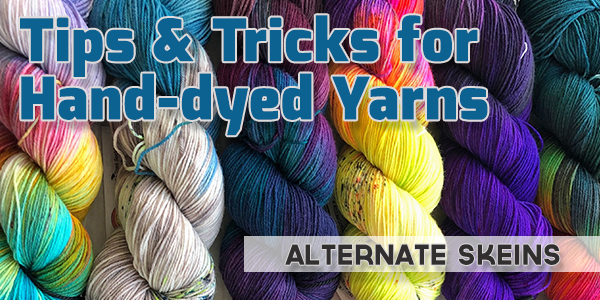We recently asked all the dyers we work with and sell yarns from to share their best piece of advice for working with hand-dyed yarns. Overwhelming, they all agreed it was to alternate skeins when using their yarns.
What we love most about hand-dyed yarn are the beautiful and unique colors created by this process. But these same colors and the variations that go with them, can also cause things we don’t like in our finished pieces. Hand-dyed yarn is just that, dyed by hand and is more of an art form than an exact science. This means sometimes two skeins, even dyed at the same time, can have variations in their color.



What about solid hand dyed yarn? I mean, should I ALWAYS alternate hand dyed yarn regardless of shade? I have some non varigated hand dyed yarn for a project (using 3 hanks) and not sure if there is a reason to alternate.
Honestly, there really is no such thing as solid hand-dyed yarn and that’s why we love it. Tonal & Semi-Solid yarns are the closest to solid-colored yarn that hand dyers create but very few of these skeins are solid. There are almost always color variations within the skein, which is the nature of putting colors on yarn by yarn. Some kettle-dyed yarns can have the color more evenly distributed but again, almost always there are variations. We’ve had issues with a kettle-dyed tonal yarn where the different skeins had slightly different shades of the color and the shawl we used had a distinct line where we went from one skein to the next. Alternating skeins will eliminate that from happening! Hope this helps!!